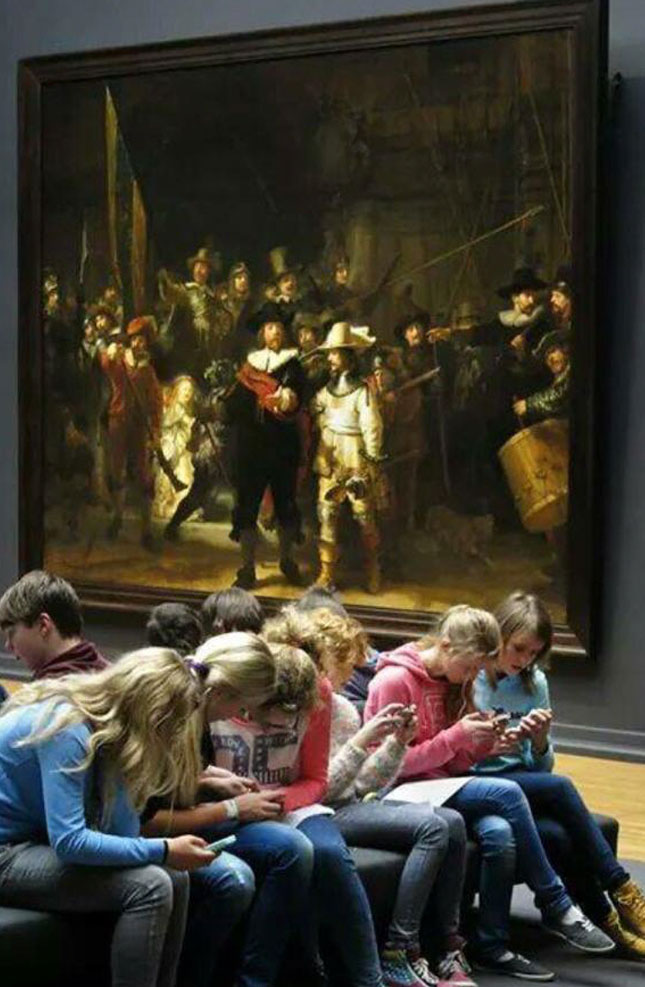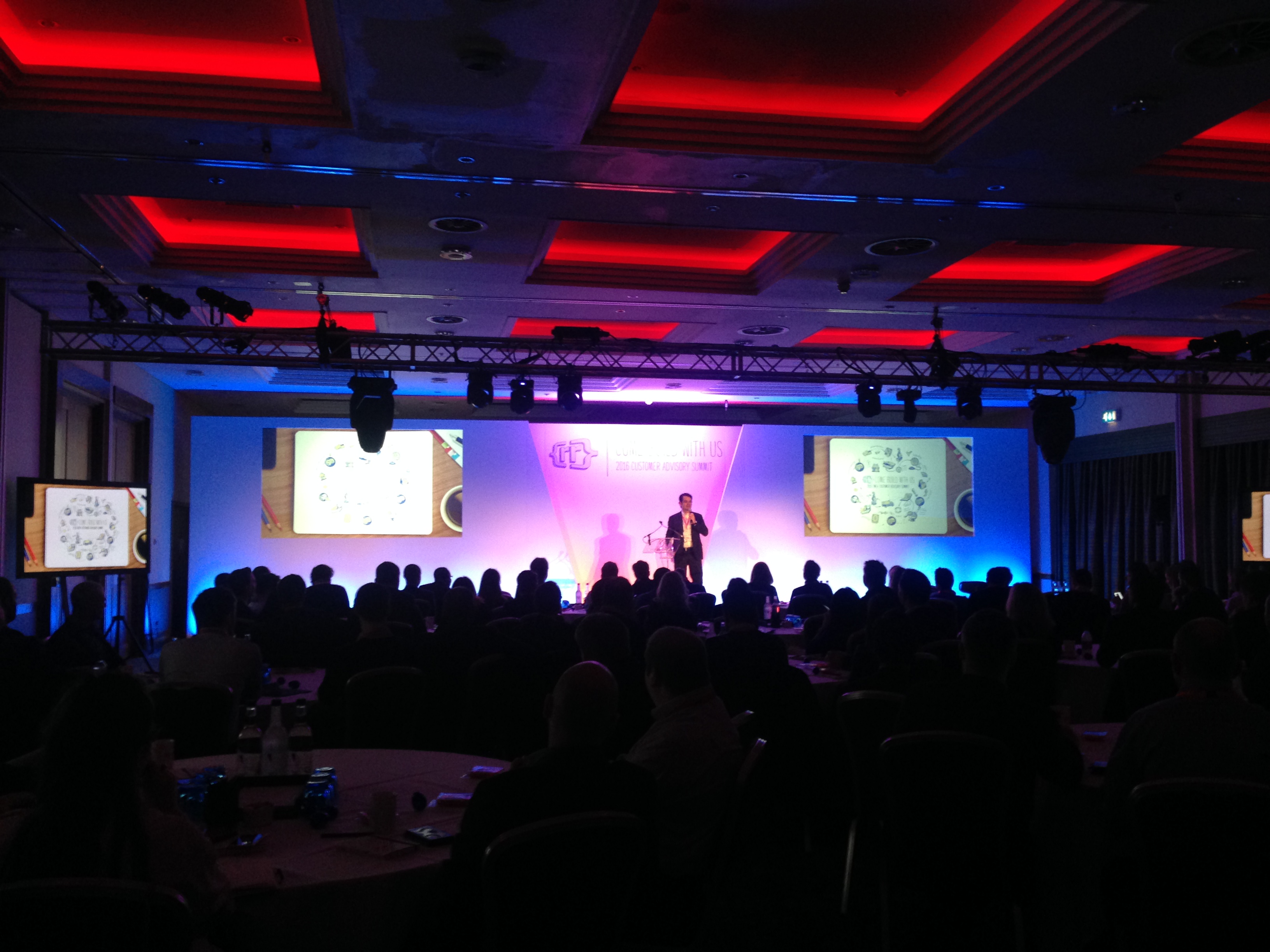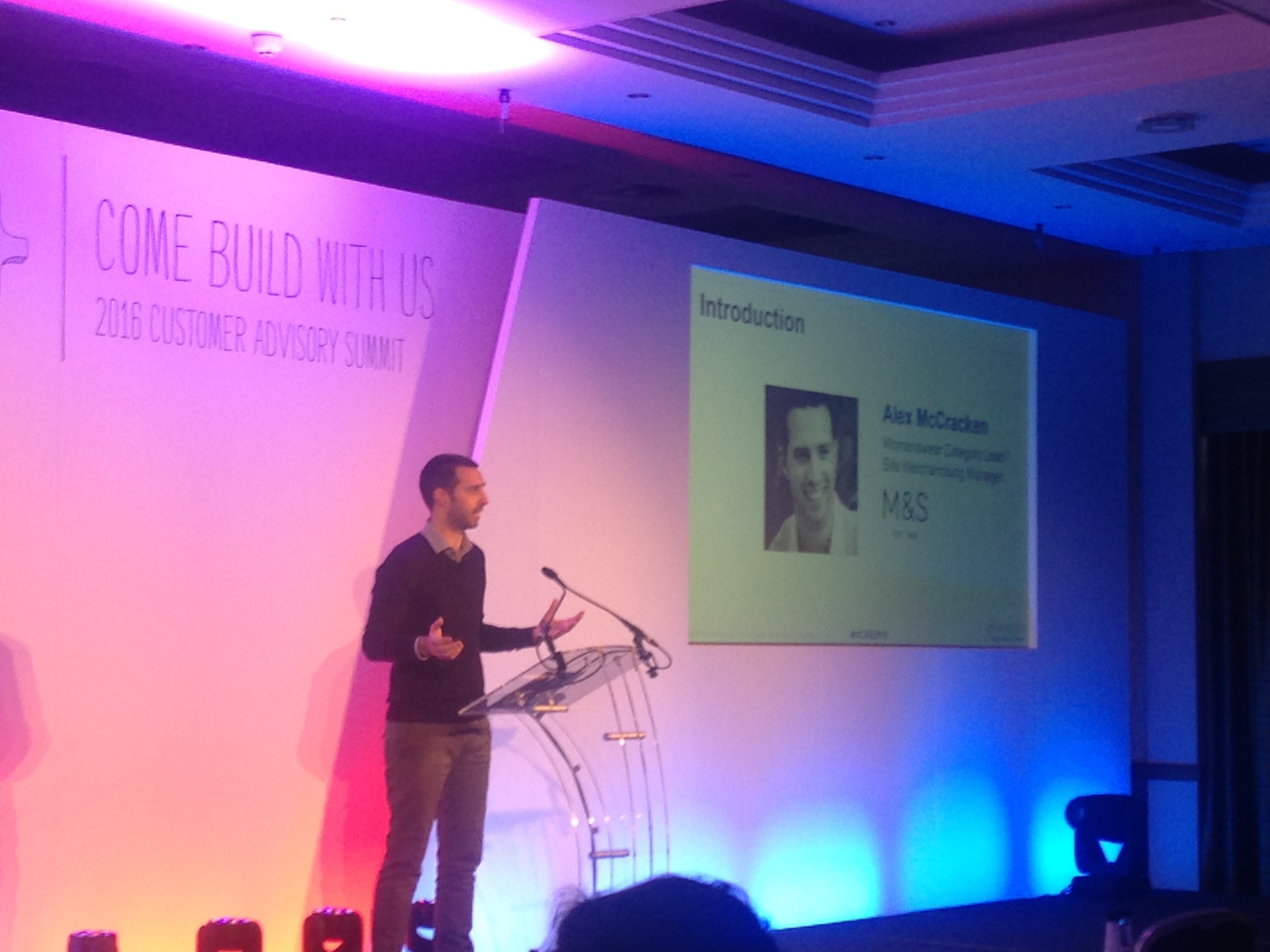Last week over 200 in-store innovators from 120 enterprise retailers, gathered at Future Stores in the Victoria Park Plaza in London. The event is a ‘one-stop-shop’ for retailers seeking practical solutions to accelerate their in-store transformation projects from concept to reality.
There were many interesting topics covered from in-store design to leveraging data from digital channels to adapt in-store experiences. The common thread throughout all the conversations, presentations and debate – was putting the customer at the heart of all strategies and initiatives; from driving customer engagement to improving their experience and making their shopping journey as easy as possible.
One of the most interesting debates was about the use of technology in-store. It was abundantly clear retailers are either embracing it or running in the opposite direction. There are perfectly legitimate reasons as to why a retailer is on one side of the fence or the other.
Where a retailer has a high turnover of sales staff with busy stores and peaks at checkout tills, utilizing technology on the shop floor can certainly enhance the customer’s experience. In this scenario, arming sales assistants with access to stock levels, personalized recommendations and complementary products plus the ability to take payments on the shop floor, improves the experience for customers, saving them time and results in more sales and less returns.
However, if a retailer has highly trained, loyal sales assistants who are knowledgeable and enthusiastic product advocates, who act as personal advisors to their shoppers, supporting technology to help the sales process is arguably reduced.
Regardless of the environment or scenario, it’s agreed that technologies introduced to the in-store experience should be complementary to the shopping journey – not a distraction for associates and shoppers alike.
Ultimately, it will be the customer who decides. As our ‘Creepy/Cool’ survey from 2015 revealed, shoppers also have different attitudes towards technology in-store. Where some shoppers embrace features such as facial recognition and interactive mirrors making product suggestions in changing rooms as cool, others are turned off at the mere thought. Therefore, the type of customer a retailer has will influence their use of technology in-store. That said, attitudes can and often do change over time, and I’m certainly looking forward to the latest ‘Creepy/Cool’ survey results, which are out in the next few weeks.
Overall, we thoroughly enjoyed the debate at Future Stores, and we’re looking forward to their next event in Seattle in just a few weeks time.
Can a better user experience disrupt an industry? I don’t mean digital-only experiences like Angry Birds or FarmVille, but industries with physical assets and high marginal costs like taxis and 200,000 square foot stores. Uber and Amazon are proving that user experience disrupts. Amazon accounted for 24% of all U.S. retail growth last year and taxi license values have dropped 28% since Uber launched. Increasingly, our clients are telling us that their customers compare their user experience’s to that of Uber and Amazon — not Kohl’s to Target, Nordstrom to Saks, Williams Sonoma to Crate & Barrel, or Sam’s Club to Costco. Today, your competition, especially in user experience, has no bounds. Vertical silos no longer apply, you’re competing against whomever has created the most innovative and user-centric experience.
Google predicted this six years ago and has consistently repeated the warning ever since, however, few retailers responded. It’s difficult to head this kind of warning when ecommerce is growing at 30% year-over-year and there’s no pain in sight, but this year the pain arrived. So what can retailers do?
One of our luxe department store clients conducted a study a year ago to determine what their clients wanted in their user experience. They were considering everything from pop-up stores, in-home trunk shows to tablet apps. The response was oddly simple and overwhelmingly clear: whatever you do make sure it works on the shopper’s 5 inch smartphone screen and equip in-store sales associate’s with tablets rich with useful information. They were a bit surprised. Women standing in a gorgeous multi-story luxury department store would want rich, personalized information on their 5” screen? Overwhelmingly, yes. And when she was talking face-to-face with a high-paid, well-trained sales associate she wanted the associate to have the same personalized information so they could share it on an 8” screen? Yes again!
Like most mega-trends, it’s not surprising in retrospect. After all this is the generation that publishes their lives across social media, invented the selfie, and stares at their beloved 5” screen every chance they get. Although we’ve heard it time and time again, we’ve now been told that mobile dominates, plain and simple.
So with mobile applications in mind, here are the low-hanging fruit we’re seeing our retail clients go after:
Offline sales: Add store and contact center sales transactions to your web and mobile app customer profiles. Transactional data is relatively small. It only takes four minutes to upload Cyber Monday sales for a huge retailer such as Macy’s.
In-store mode for customers’ mobile app: Stores are information rich environments, but so are smartphone apps, so get them working together. JCPenney, L.L.Bean, Patagonia and many others are doing just this. Start with something as simple as letting customers scan an item’s barcode and retrieve real time prices, inventory, accessory recommendations, other product recommendations and even editorial content. Standing in front of a 4 foot hunk of plastic is useful, but so is watching an awesome video on how to use it; feeling the fabric of a dress is experiential, but so is seeing how it was fitted and flowed on the runway. If your customers like scanning items then add more proactive service features such as passively detecting location with beacons and then streaming personalized recommendations and content as they move about the store.
Sales associate app: Monsoon was our first client to add personalization to sales associate tablets. After extensive testing, they rolled it out to 325 stores, saw a 130% increase in average order value for customers served with the app compared to customers who were not. Customers loved the app, 84% of customers gave it an excellent rating and they purchased 1.3x more merchandise. Since then Barneys New York, Ann Taylor and others have rolled out similar sales associate apps.
In-store browse abandonment emails: If 80% of a retailer’s sales are in-store and only 25% of store customers use the apps described above, then that will generate as much customer-level data as their website, doubling the behavioral info available for driving personalization. One obvious and high ROI use case is browse abandonment (retargeting) emails following store visits that did not result in a sale.
There are a myriad of ways to create impactful customer experiences across channels, and if it hasn’t become evident, now is the time. There is no one size fits all for omnichannel personalization, after all that would be counter intuitive. If you’re interested in learning more watch my webinar on How to Utilize Your Customer Experience to Disrupt your Market or feel free to reach out to me at DBryan at RichRelevance.com to start sketching a personalization roadmap that best represents your brand, channels, tech stack, budget, and ROI goals.
I wanted to highlight a particularly interesting case study of RichRelevance customer, PriceMinster. The second most visited ecommerce site and leading marketplace in France, PriceMinister, part of the Rakuten Group, was looking for a personalisation platform to help improve their commercial performance and give them a competitive edge.
PriceMinister turned to RichRelevance in 2012 because they needed a scalable and robust personalisation engine to cope with one of the broadest product catalogues (up to 200 million products) and 15 million visitors per month to their website.
After A/B tests showed a much greater engagement of visitors with the RichRelevance personalised recommendations verses their incumbent provider, plus a 1.5% revenue lift, PriceMinister implemented the RichRelevance Recommend™ solution.
Wanting to ensure they were practicing as much personalisation as possible, PriceMinister went on to utilise the help of one of the RichRelevance personalisation consultants to run optimisation tests in order to further improve performance. As a result they’ve maximised the amount of personalisation opportunities that can occur across their various customer touchpoints (web, email, mobile, etc.).
To find out how PriceMinister got on with their optimisation project and for more results, download the full case study.
The usage of proximity-based beacons seems to have floundered since they were introduced in 2013. After reading this very interesting article about the Regent Street App, it is obvious why. Unfortunately, many retailers, and even some tech companies, think of beacons as just a tool to trigger push notifications. From this perspective it is understandable why many would assume that beacons do more damage than good; using beacons to trigger endless location-based notifications would equate to a type of spam, resulting in an irritated customer.
In truth, beacons are way more than a vehicle for push notifications if you understand how to use them correctly. Here’s why:
Beacons are dumb, technically speaking. The only thing they do is broadcast a specific string. For example, the beacon might broadcast its name and location, such as number 123. That’s all. It’s up to the application and infrastructure behind the beacon to make any sense of it. Essentially, beacons are passive and can be used to deliver whatever string it is programmed to.
Ok, so now you’re thinking: what does that mean and how should retailers use them?
Here’s some food for beacon-thought. Please note that this is by no means a comprehensive list of beacon applications. However, if you are using a sophisticated personalization platform, these should all be relatively simple to deploy:
Store Identifier
Suppose you only have one beacon in a chain of stores and an app that can pick up the signal. What can you do with it? First you can provide the beacon with the name of your store, for example: “New York, 5th Avenue”. Once the shopper enters the store and the app picks up the beacon, you can write this event in a centralized user profile so that you know that specific shopper entered that specific store. Based on this information, you can then determine the frequency the shopper comes into your store(s). If you find the shopper frequents one store more often than others, you can determine this is his/her preferred store. Once you know his preferred store, you can send him promotions and offers from that specific store and always make sure you show the inventory of products at that location.
Department Locator
If you place beacons around the store in departments such as shoes, coats and perfumes. When the shopper opens up the app in the store, the app picks up the the signal of the beacon; the beacon will know where the shopper is specifically in the store and will display the appropriate and relevant content. When the app is opened in the shoes department, it will show content for shoes. When it’s in the perfumes section, it will show content for perfumes – you get the idea. The information about which department has been visited can be stored in the centralized user profile, so that when the user logs onto his/her mobile device or home computer, he or she is greeted with relevant content.
Re-Engagement Trigger
Given that the beacon has learned and retained all of this information in the centralized user profile, a retailer can leverage these learning and behaviors to intelligently re-engage and welcome the shopper when he/she returns to the store. With every trigger, previous behaviors can be recalled to facilitate a curated conversation and a customer experience that learns and adapts with the customer.
Connecting the Dots
Another valuable type of information is offline purchase data, which can be ingested into the centralized user profile through the means of a loyalty card program or e-receipts. When you find that a shopper visited the fragrance department and viewed various fragrances on his/her mobile while navigating the store, but ultimately didn’t purchase a fragrance, you can re-engage with him/her by triggering personalized email with content from this section and products he/she looked at.
The retail landscape demands that the customer experience becomes simpler, more intuitive and more personal than ever before. And today, every shopper navigates the aisles and departments of his or her preferred retailers with mobile devices in hand; beacons help connect the customer journey, bringing the digital and physical worlds together for a harmonious experience.
Recently we participated in the event E-Commerce One to One in Monaco. In its sixth year, it yet again proved to be THE event for ecommerce leaders. With over 1,000 carefully selected participants, the three-day event made for a rich exchange of ideas and innovations.
Some of the key topics discussed ranged from the shopping experience on mobile devices and developing a ‘mobile first strategy’ to customer service excellence and loyalty programmes. A survey of retailers attending the event uncovered the following top six investment priorities for retailers in 2016:
- Creating excellence in customer service
- Enhancing the shopping experience for mobile
- Building customer-centric financial indicators
- Developing a mobile first strategy
- Building innovations for loyalty programmes
- Developing branded content
For RichRelevance, E-Commerce One to One represented an opportunity not just to make new acquaintances, but also to meet and network with existing customers through dinners and receptions. The speaking sessions also featured one of our valued customers —children’s apparel retailer, Petit Bateau — who presented a workshop about their omnichannel journey with us.
In her workshop, CRM & Digital Director, Christel Hennion talked about the challenges faced by Petit Bateau and why they needed an omnichannel approach. With nearly half (44%) of their customers first searching online before visiting a store, Petit Bateau needed to connect online and offline sales channels to better understand their customers so they could make the right omnichannel recommendation.
To do this, Petit Bateau leverages RichRelevance’s user profile service to gather and access the necessary information about their customer both online and offline. With this customer knowledge, Petit Bateau used RichRelevance product recommendations to personalize the relevant offer on each channel for their shoppers. As a result, they have seen increased engagement and frequency of purchase from their customers.
Petit Bateau also shared an interesting cohort analysis. Even though a small percentage of shoppers interact with product recommendations, this segment represents 50% of orders and 60% of global turnover.
This segment leverages personalization as a means of navigation and catalogue discovery. They are often strongly committed and provide high value to the retailer.
See the E-Commerce One to One blog post for more on Christel’s talk.
Similarly, Google presented a separate workshop where they further expanded on the topic of analysing the influence of online and offline sales, again using Petit Bateau as the example. Laureline Serieys, Retail Industry Head at Google, discussed how they helped Petit Bateau map their customer journey and measure the influence of online and offline purchases. Read more on this session here.
Thanks to all those we met at E-Commerce One to One! The stellar group made it such an insightful event to attend. We’re looking forward to 2017 already.
Recently key leaders in omnichannel personalisation attended our EMEA Customer Advisory Summit in the United Kingdom. We were delighted to welcome customers from France, Spain, Germany, Sweden, Denmark and the United Kingdom to the only European forum dedicated exclusively to omnichannel retail personalisation.
In its fifth year, the objective for this event, as always, was to help furnish retail and marketing leaders with the strategies and tools to build superior customer experiences. In addition to the RichRelevance leadership presenting, I’m so pleased to share that our EMEA Summit featured a stellar roster of thought leaders and world-class brands; and I wanted to share my insights related to this exciting event.
The EMEA summit featured keynote speaker Spencer Izard, Head of European Insights at IDC. Spencer spoke about differentiating through retail, which provided our retailers with further tools and information on how to use personalisation to innovate and transform their customer experiences.
Additionally, well-known and influential retailers gave presentations about their successes using RichRelevance as their omnichannel personalisation partner.
- Marks & Spencer discussed why they chose RichRelevance Recommend™ and how RichRelevance helped them with a platform refresh. In addition, M&S provided insights about how they leveraged Client Excellence to drive sales, conversion and overall value.
- French retailer, Petit Bateau, talked about how they have successfully leveraged RichRelevance across their multiple websites, through email, mobile and offline. They also spoke about how they have started to build their own strategies to segment audiences and make more predictive recommendations to their customers.
- Shop Direct discussed how the UK’s second largest pure play retailer found RichRelevance to be the best tool to help them personalise their customer’s shopping experience and fulfill their company purpose to “Make good things easily accessible for more people.”
- Saks Fifth Avenue presented the US retailer’s omnichannel strategy and showcased how Saks elevates the customer experience through leveraging Recommend.
The event was supported by our partners Accenture, Hooklogic, Eagle Eye and Content Square all of whom contributed to the lively exchange of ideas, insights and learnings around improving customer experiences.
Omnichannel personalisation is a top strategic priority for retailers because the customer experience has now become the new battleground for retailers. The resources at the event helped our clients learn how to best use the Relevance Cloud personalisation platform to elevate the customer experience in real time, at every touchpoint, and compete based on a unique view of what is possible from their brand.







